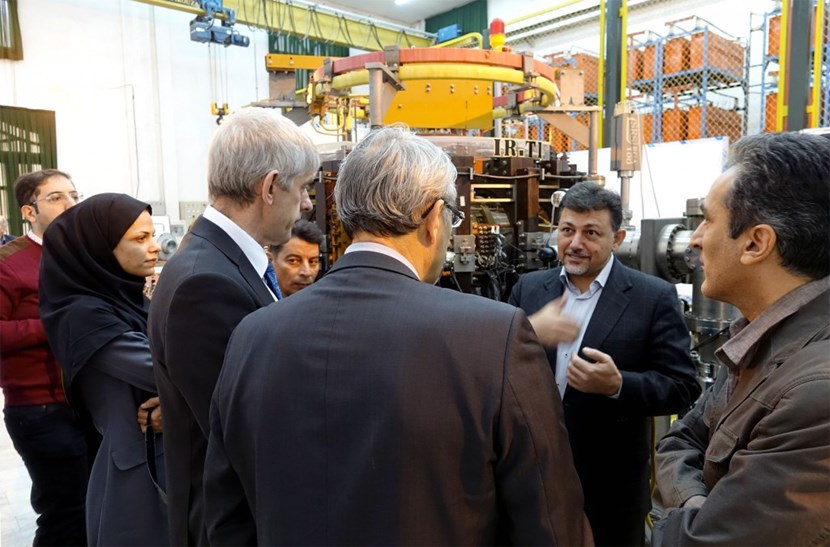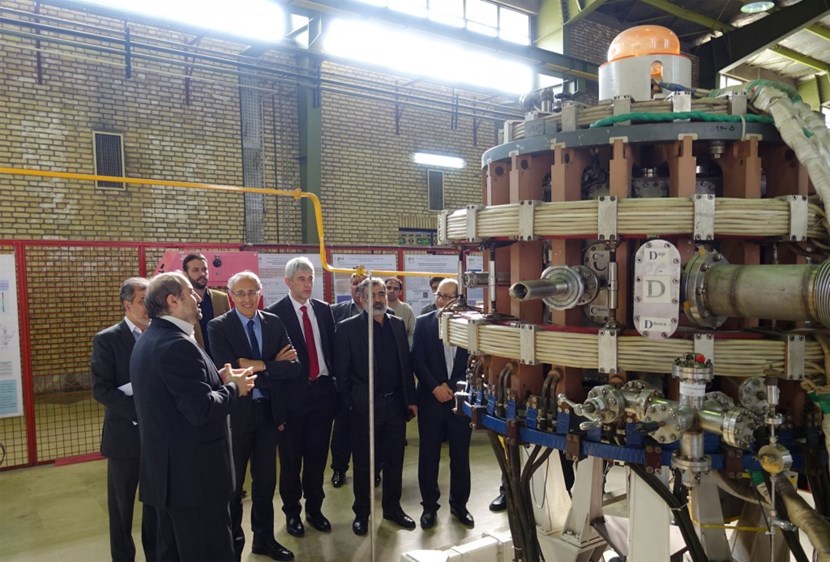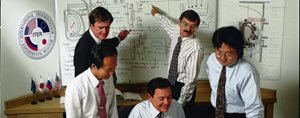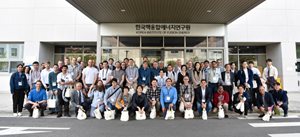ITER NEWSLINE
-
ITER team visits Iran
Laban Coblentz, Head of Communication
On 4-7 November, Director-General Bigot led a small ITER team to the Islamic Republic of Iran. The visit, conducted in response to Iran's formal request to be considered for participation in the ITER Project as an "Associate Member," was prepared with the full authorization of the existing ITER Members and was designed to improve ITER's understanding of Iran's fusion-related programs and related capacities.

Iranian fusion experts from the Plasma Physics Research Center of Islamic Azad University explain the functioning and research program of the IR-T1 Tokamak.
The agenda was densely packed. The ITER team visited each of Iran's small tokamak facilities and associated laboratories — at the Plasma Physics Research Center of Islamic Azad University, at the Atomic Energy Organization of Iran (AEOI), and at Amirkabir University of Technology — as well as a fifth small tokamak under construction. Particular attention was given to Iran's work on tokamak diagnostics, as a possible area of future collaboration.
Understanding scientific and technological capacity also means understanding the humans involved: the fusion scientists, engineers, graduate and PhD students and post-docs who form the core of Iran's program. The ITER team presented the current status of the ITER Project, as well as selected ITER technologies, and listened to presentations by Iranian experts at all levels on their fusion-related research, experimentation, and technology development. This led to extensive Q&A sessions and animated sidebar discussions.
Iran's keen interest in ITER was also evident in the participation of high-level government officials, whose commitment will be critical to any collaboration. Two members of the President's Cabinet — Vice President Ali Akbar Salehi, head of AEOI, and Vice President Sorena Sattari, who oversees science and technology — spent significant time with the group. Two documents also were signed, a Non-Disclosure Understanding and a Minutes of Meeting, to ensure mutual understanding of the purpose and conditions of the visit, and to signal the mutual intent of the ITER Organization and the Islamic Republic of Iran to work in good faith toward a possible Cooperation Agreement.

Members of the Atomic Energy Organization of Iran briefed the ITER team on diagnostics R&D performed using the Damalvand Tokamak.
In many ways this was a historic moment. The ITER Agreement is open to any country that has the scientific, technological and financial commitment to contribute meaningfully to the project, towards the peaceful use of fusion technology in compliance with the Agreement. But such occasions have so far been rare in ITER's history.
The next step will be for Director-General Bigot to discuss the results of his visit with the ITER Council. Ultimately, any decision related to a prospective new member or collaborator is strictly subject to the Council's unanimous approval. And any cooperation will need to be tightly woven into the already complex ITER schedule, in a way that promises mutual benefit for both Iran and ITER as the project builds toward the future.
return to the latest published articles








